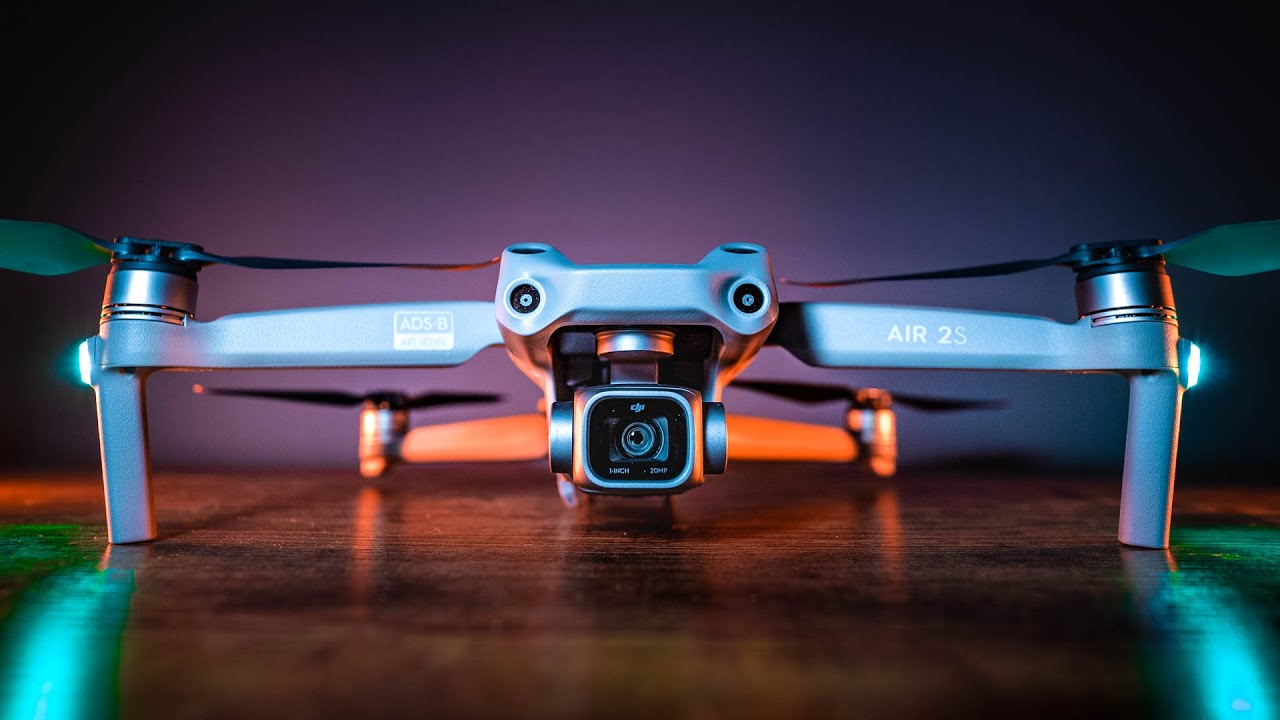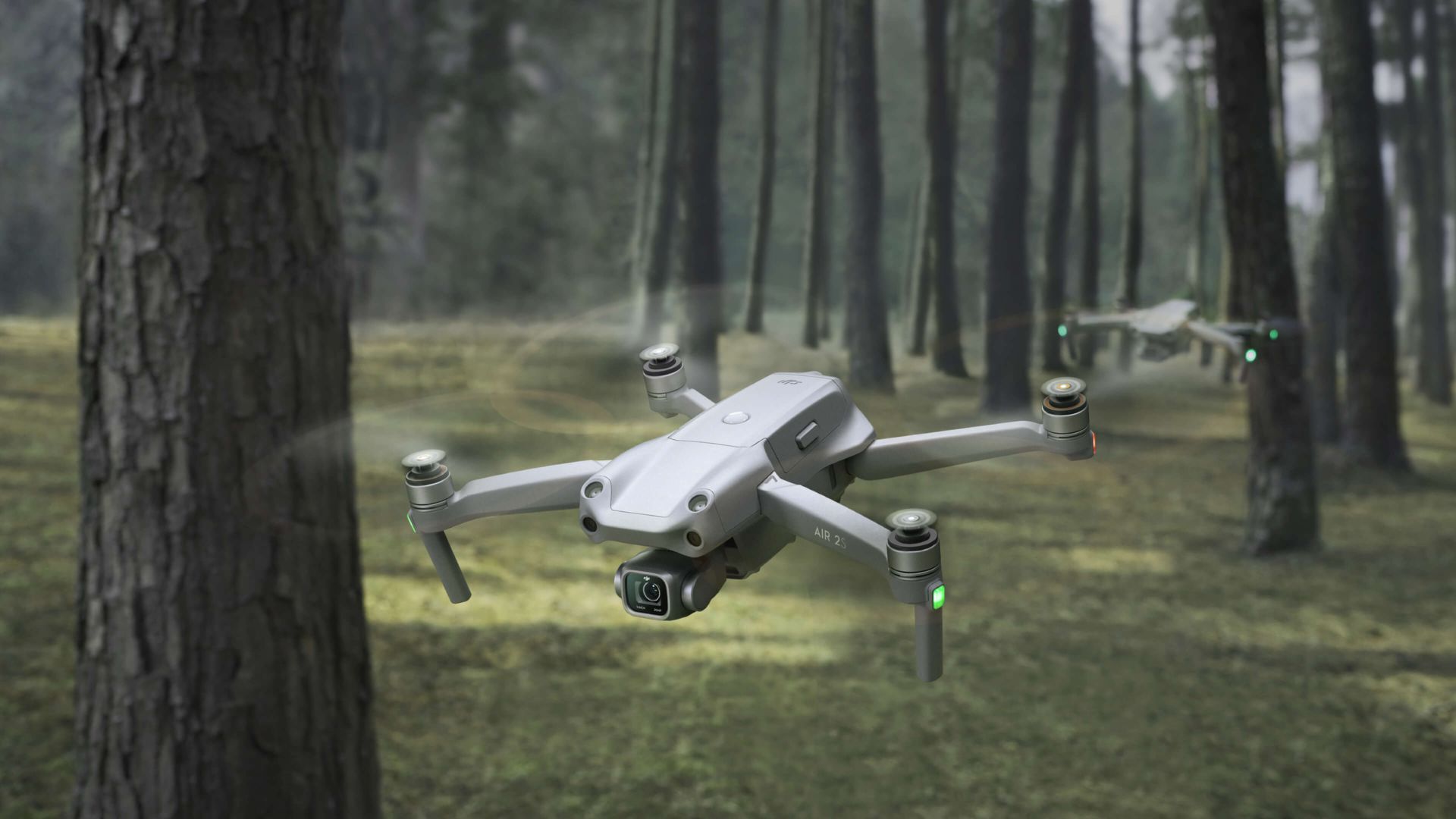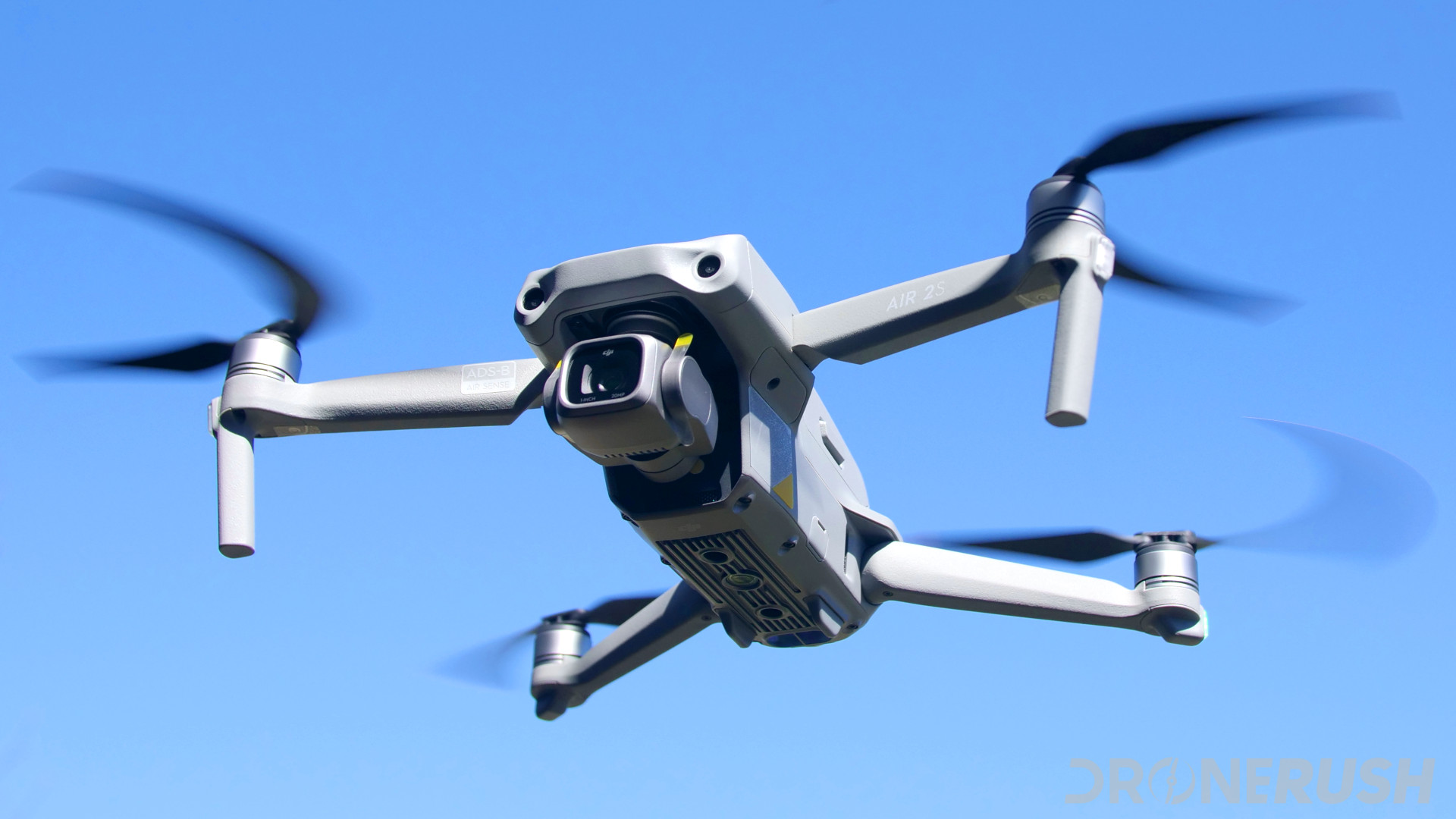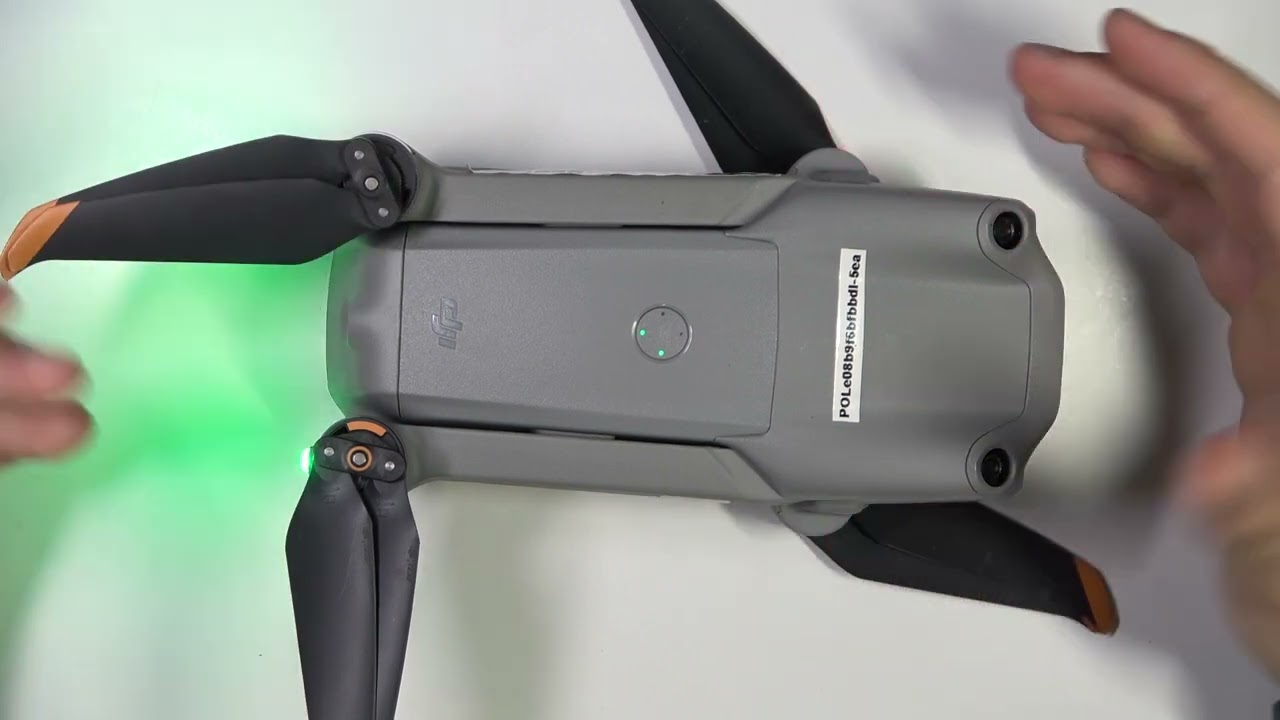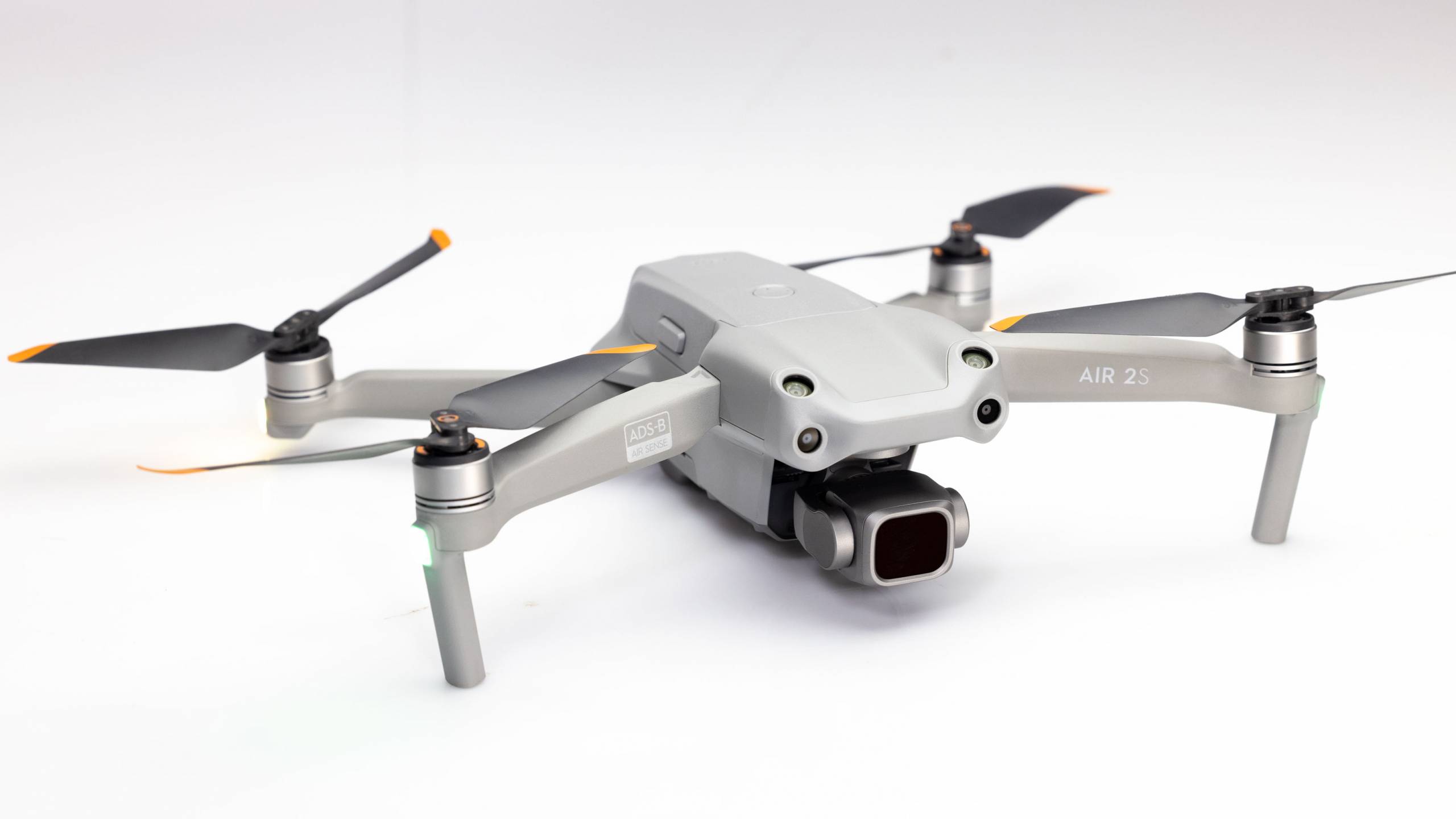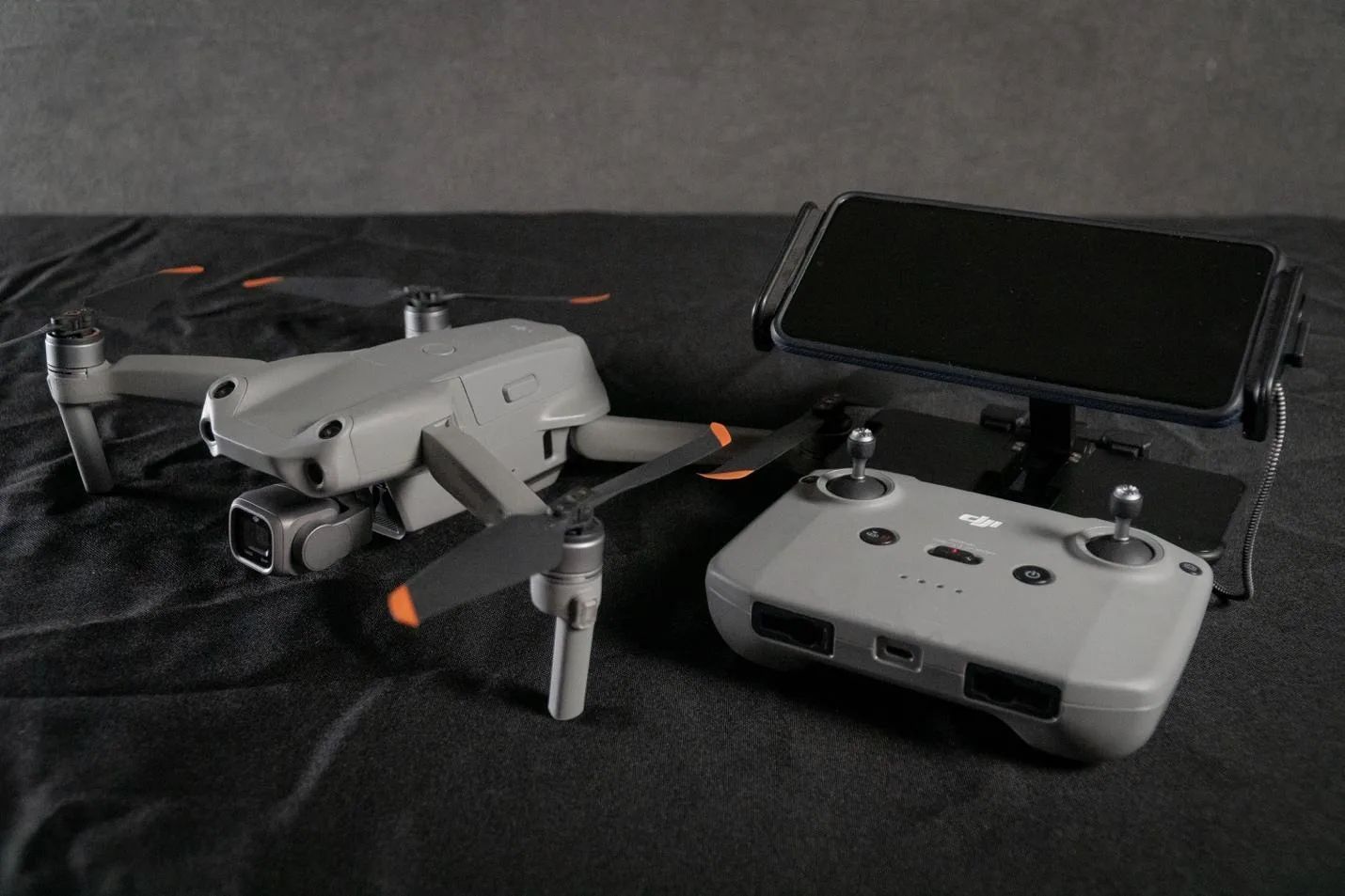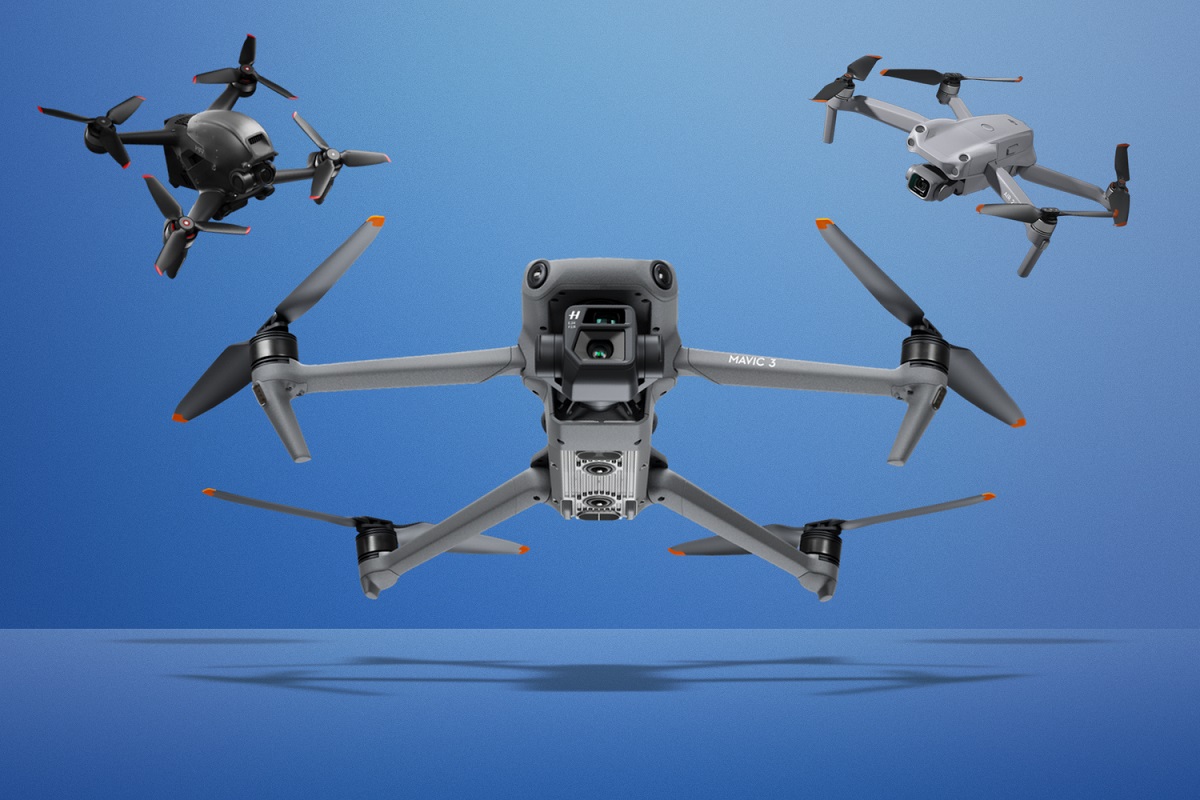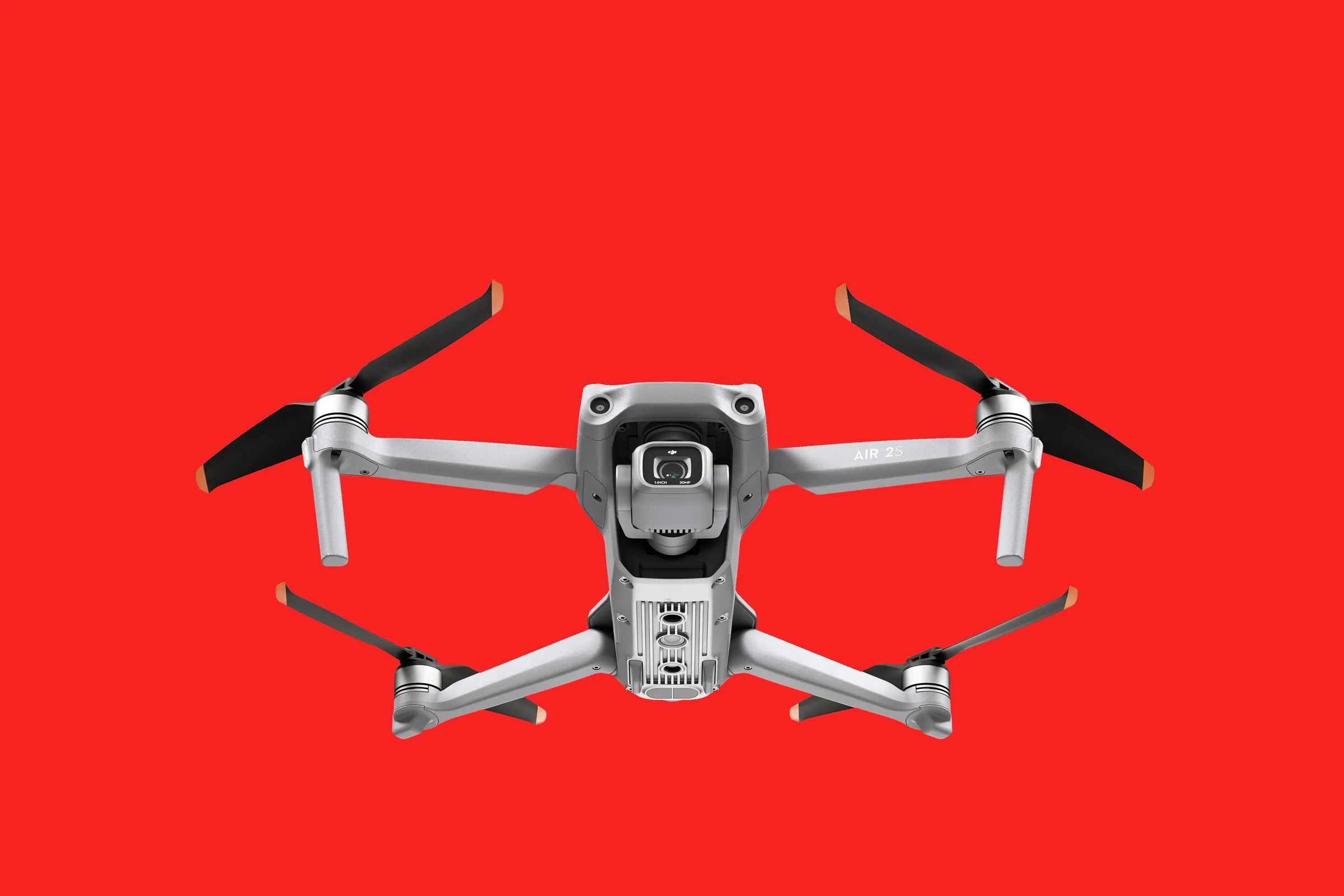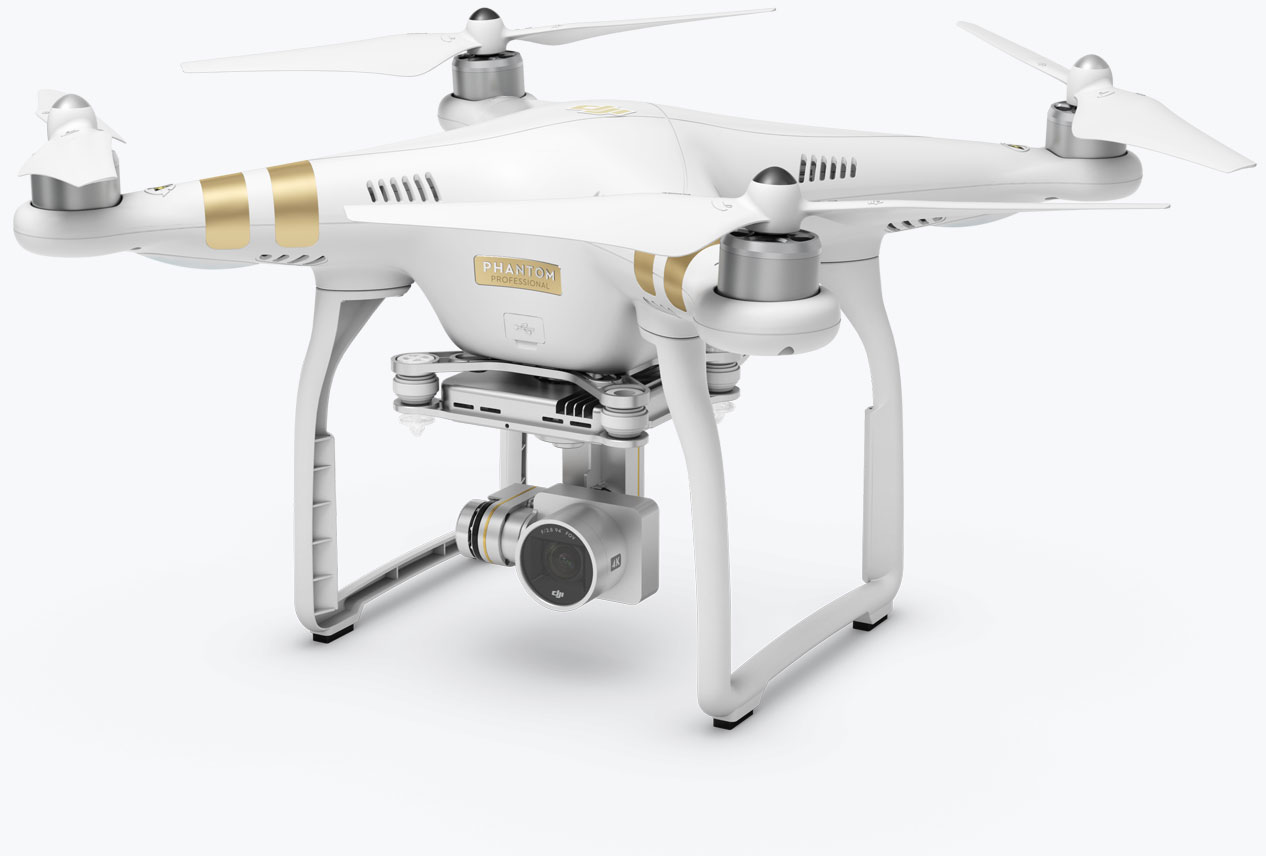Introduction
Welcome to the exciting world of flying the DJI Air 2S drone! Whether you are a first-time drone pilot or an experienced enthusiast, the DJI Air 2S offers incredible features and capabilities that will take your aerial photography and videography to new heights.
The DJI Air 2S is a compact and lightweight drone that combines advanced technology with user-friendly controls, making it accessible to beginners and professionals alike. With its powerful camera, intelligent flight modes, and precise maneuverability, this drone opens up a world of creative possibilities.
In this comprehensive guide, we will take you through each step of the process, from unboxing and setup to mastering flight techniques and capturing stunning aerial footage. We will also provide valuable tips on safety, maintenance, and drone etiquette to ensure a safe and enjoyable flying experience.
Whether you are looking to explore breathtaking landscapes, document special events, or simply enjoy the freedom of flight, the DJI Air 2S is the perfect companion. So, let’s dive in and discover how to fly this remarkable drone!
Unboxing and Setup
When you first receive your DJI Air 2S, the excitement of unboxing it can be overwhelming. Here’s a step-by-step guide to help you properly set up your drone:
1.1 Unboxing:
Start by carefully opening the box and removing all the contents. Inside, you will find the DJI Air 2S drone, the remote controller, propellers, battery, charging cable, and documentation. Take a moment to admire the sleek design and sturdy construction of the drone.
1.2 Charging the Battery:
The next step is to charge the battery. Connect the charging cable to the battery and plug it into a power source. It is recommended to use the provided charger or a compatible one. While the battery is charging, familiarize yourself with the other components of the drone.
1.3 Attaching the Propellers:
Carefully attach the propellers to the drone, following the indicated clockwise and counterclockwise rotation markings. Ensure that they are securely fastened before proceeding.
1.4 Mounting the Mobile Device:
If you plan to fly the DJI Air 2S using your mobile device, mount it on the remote controller. Use the adjustable holder to securely hold your device in place. Make sure your device is compatible with the DJI Fly app, which you will need for a smooth flying experience.
1.5 Updating Firmware:
Before you take your first flight, it is essential to update the firmware of both the drone and the remote controller. This ensures that you have the latest features, performance improvements, and bug fixes. Follow the instructions provided in the DJI Fly app or the official DJI website to update the firmware.
1.6 Calibrating the Compass:
Compass calibration is crucial for accurate navigation. Find an open area away from metal objects and follow the instructions on the DJI Fly app to calibrate the drone’s compass. This step ensures optimal flight performance and stability.
1.7 Checking the Camera and Gimbal:
Inspect the camera and gimbal for any signs of damage. Ensure that they are properly aligned and functioning correctly. The DJI Air 2S is equipped with a high-resolution camera and a three-axis gimbal, which work together to capture smooth and stable footage.
1.8 Familiarizing Yourself with the Controls:
Take the time to understand the layout and functions of the controls on the remote controller. Familiarize yourself with the buttons, sticks, and switches that control various aspects of the drone’s flight. Practice these controls before taking off to gain confidence.
By following these steps, you can ensure that your DJI Air 2S is set up correctly and ready for its maiden flight. Remember to always refer to the instruction manual and online resources provided by DJI for additional guidance and safety precautions.
Familiarizing Yourself with the DJI Air 2S
Before taking your DJI Air 2S drone for a flight, it is important to familiarize yourself with its components and features. This section will guide you through the various parts of the drone and help you understand their functions:
2.1 Drone Body:
The DJI Air 2S has a compact and lightweight design, making it portable and easy to carry. The body of the drone houses the camera, gimbal, propulsion system, and sensors. It is important to handle the drone with care to prevent any damage to these components.
2.2 Camera and Gimbal:
The DJI Air 2S is equipped with a high-resolution camera capable of capturing stunning photos and videos in up to 5.4K resolution. The camera is mounted on a three-axis gimbal, which provides stability and allows for smooth, vibration-free footage.
2.3 Remote Controller:
The remote controller is the primary device used to control the drone. It features control sticks, buttons, and a mount for your mobile device. The controller communicates with the drone using a secure connection and provides real-time feedback and flight information.
2.4 DJI Fly App:
The DJI Fly app is a mobile application that connects your drone to your smartphone or tablet. It allows you to access advanced flight settings, view live camera feed, plan flights, and review captured footage. The app also provides a wide range of intelligent flight modes and creative features.
2.5 Intelligent Flight Modes:
The DJI Air 2S offers various intelligent flight modes to assist you in capturing unique aerial shots. These modes include ActiveTrack, which automatically follows a selected subject, Point of Interest, which circles around a point of interest, and Waypoints, which allows you to pre-plan a flight path.
2.6 Sensors and Safety Features:
The DJI Air 2S is equipped with sensors that help it avoid obstacles and maintain a safe flight. These sensors include forward, backward, and downward-facing sensors, along with an auxiliary light for improved visibility in low-light conditions. Familiarize yourself with these features to ensure safe and smooth flights.
2.7 Flight Settings:
In the DJI Fly app, you can access various flight settings to customize your flying experience. Adjust parameters such as flight speed, control sensitivity, and camera settings to suit your preferences and the specific requirements of your aerial photography or videography project.
By becoming familiar with these essential components and features of the DJI Air 2S, you will feel more confident and in control during your flights. Understanding how each element contributes to the performance and capabilities of the drone will allow you to make the most of its advanced technology.
Pre-flight Checklist
Before every flight with your DJI Air 2S drone, it is essential to perform a pre-flight checklist to ensure a safe and successful flight. This checklist will help you verify that all the necessary precautions have been taken and that the drone is ready for takeoff:
3.1 Check Weather Conditions:
Start by checking the weather conditions at your intended flying location. Avoid flying in strong winds, rain, or foggy conditions, as they can affect the stability and performance of the drone. Choose a time and place with clear skies and calm winds for the best flying experience.
3.2 Verify Drone Battery Level:
Check the battery level of your DJI Air 2S drone. Ensure that the battery is sufficiently charged to support the duration of your intended flight. It is always recommended to have spare batteries fully charged and ready for use, especially for longer flights.
3.3 Inspect the Drone:
Thoroughly inspect the drone for any signs of physical damage, loose connections, or malfunctioning components. Check the propellers, camera, gimbal, and sensors to ensure that they are in proper working condition. It is important to address any issues or abnormalities before taking off.
3.4 Check Memory Card Capacity:
Verify that the memory card inserted into the drone’s camera has sufficient space to store the photos and videos you plan to capture. Consider using a high-capacity memory card to avoid running out of storage during your flight. Additionally, make sure the memory card is properly inserted and locked in place.
3.5 Confirm GPS Signal:
Check for a stable GPS signal on your drone’s controller or in the DJI Fly app. A GPS signal is crucial for accurate positioning and navigation. Wait until the drone has acquired a strong GPS signal before taking off to ensure stable flight performance and reliable return-to-home functionality.
3.6 Clear Takeoff and Landing Area:
Ensure that the takeoff and landing area is clear of any obstacles, including people, vehicles, trees, or power lines. It is important to have a wide and open space to allow for safe takeoff and landing maneuvers. Keep bystanders away from the area to prevent accidents or distractions.
3.7 Check Flight Restrictions:
Before flying, familiarize yourself with any flight restrictions or regulations in your area. Check for any local laws regarding drone usage and respect any restricted airspace or no-fly zones. Stay informed about any temporary flight restrictions due to events or sensitive locations.
3.8 Review Flight Controls:
Take a moment to review the flight controls and familiarize yourself with the various inputs required to maneuver the drone. Ensure that you are comfortable with the controls and know how to perform basic maneuvers such as ascending, descending, rotating, and moving forward and backward.
By following this pre-flight checklist, you can ensure that your DJI Air 2S drone is in optimal condition and ready for a safe and enjoyable flight. Taking the time to go through these steps will help minimize the risks associated with drone flying and enhance your overall flying experience.
Understanding Flight Modes and Settings
The DJI Air 2S drone offers a range of flight modes and settings that allow you to customize your flying experience and capture incredible footage. Understanding these modes and settings will enhance your abilities as a pilot and enable you to create unique and breathtaking aerial shots:
4.1 Intelligent Flight Modes:
The DJI Air 2S comes equipped with intelligent flight modes that make it easier to capture professional-quality footage. These modes include ActiveTrack, which allows the drone to automatically follow a subject while keeping it centered in the frame. You can select a subject on the app or use the Spotlight function to focus on a specific person or object. Another popular mode is Point of Interest, where the drone will circle around a designated point, allowing you to capture dynamic and cinematic shots.
4.2 Waypoints:
The Waypoints mode allows you to pre-plan and customize the flight path of the drone. Set specific coordinates on the map in the DJI Fly app, and the drone will autonomously follow the path you have created. This mode is perfect for capturing panoramic shots or creating precise and repeatable flight routes.
4.3 Gesture Control:
With Gesture Control, you can control your DJI Air 2S drone using simple hand gestures. This feature is especially useful when you want to capture a selfie or be in the frame without using the remote controller or app. Just raise your hand and make a gesture to trigger the shutter or start recording.
4.4 Flight Settings:
In the DJI Fly app, you will find various flight settings that allow you to adjust the drone’s performance to suit your needs. You can adjust parameters such as flight speed, control sensitivity, and camera settings. Experimenting with these settings will help you achieve the desired flight characteristics and capture stunning footage.
4.5 Return-to-Home (RTH) Function:
The DJI Air 2S is equipped with a built-in Return-to-Home function that ensures the safe return of the drone in case of signal loss or low battery. When activated, the drone will automatically return to its takeoff point and land safely. Familiarize yourself with this function and its settings to ensure a reliable and stress-free return process.
4.6 Camera Settings:
Take advantage of the camera settings available on the DJI Air 2S to customize your shots. Adjust parameters such as ISO, shutter speed, and white balance to achieve the desired exposure and color balance. Experimenting with different settings will help you unleash your creativity and capture stunning aerial imagery.
Understanding and utilizing these flight modes and settings will greatly enhance your flying experience with the DJI Air 2S. Take the time to explore these features and experiment with different modes to unlock the full potential of your drone and unleash your creativity in capturing breathtaking aerial shots.
Taking Off and Landing
Taking off and landing are two critical maneuvers in drone flight. Properly executing these actions ensures a safe and controlled flight experience. Here are some key steps to follow when taking off and landing your DJI Air 2S drone:
5.1 Taking Off:
Prior to taking off, make sure you have completed the pre-flight checklist and the area is clear of any obstacles or people. Follow these steps to take off smoothly:
– Power on the drone by pressing and holding the power button until the lights illuminate.
– Place the drone on a flat, stable surface.
– With the remote controller powered on, push both sticks inward towards each other to start the motors.
– Once the drone’s propellers are spinning, slowly push the left joystick upwards to increase the throttle and initiate the takeoff.
– Monitor the drone’s ascent and maintain control over its altitude using the joystick. It is preferable to ascend to a safe height before proceeding with any maneuvers.
5.2 Landing:
Landing your DJI Air 2S drone safely is equally important. Follow these steps to ensure a smooth landing:
– Find a suitable landing area that is clear of obstacles and provides ample space for a controlled descent.
– Reduce the throttle gradually by pulling the left joystick downwards to decrease the altitude.
– Aim for a slow and gradual descent to avoid any abrupt or hard landings.
– When the drone is close to the ground, continue to reduce the throttle until the drone lands gently.
– Once the drone has landed, bring the throttle to its lowest position to stop the motors.
It is crucial to remain attentive and focused during both the takeoff and landing processes. Keep an eye on the drone and be prepared to adjust the controls as needed. Practice these maneuvers in open areas before attempting them in more challenging environments to build confidence and precision.
Remember to always check for any obstacles or hazards near the takeoff or landing area. Always prioritize safety and maintain control throughout the entire flight, from the moment the drone takes off to when it lands.
By following these guidelines, you can ensure safe and successful takeoffs and landings with your DJI Air 2S drone.
Flying Techniques and Maneuvers
Mastering flying techniques and maneuvers will allow you to take full advantage of the capabilities of your DJI Air 2S drone. Whether you are a beginner or have prior drone flying experience, practicing these techniques will enhance your piloting skills and enable you to capture stunning aerial footage. Here are some essential flying techniques and maneuvers to consider:
6.1 Mastering Basic Controls:
Before attempting any advanced maneuvers, familiarize yourself with the basic controls of the DJI Air 2S. Getting comfortable with the throttle, yaw, pitch, and roll controls is crucial. Practice various combinations of these controls to become proficient in controlling the drone’s movements smoothly and accurately.
6.2 Hovering in Place:
Hovering is a fundamental skill that allows you to maintain a stable position in the air. Practice holding the drone in place at different altitudes and orientations. This skill will be invaluable when you want to capture steady shots or need to assess your surroundings before proceeding with a maneuver.
6.3 Ascending and Descending:
Being able to ascend and descend smoothly and precisely is essential for capturing different perspectives. Practice gradually increasing or decreasing altitude while maintaining control over the drone. This skill will allow you to capture unique aerial shots and navigate through various obstacles.
6.4 Moving in all Directions:
Experiment with moving the drone in different directions—forward, backward, side to side, and diagonally. Practice flying in a straight line, turning smoothly, and changing directions seamlessly. Understanding the drone’s movement dynamics will open up countless possibilities for capturing dynamic footage.
6.5 Flying in Windy Conditions:
When flying in windy conditions, it’s crucial to adjust your flying technique accordingly. Increase your throttle slightly to compensate for the wind and maintain control over the drone. Practice flying in different wind speeds and directions to improve your ability to handle adverse conditions.
6.6 Mastering Smooth Transitions:
Smooth transitions between different movements and orientations can greatly enhance the visual quality of your footage. Practice transitioning from one movement to another seamlessly, such as smoothly changing direction or shifting from hovering to forward flight. This skill will make your footage appear more professional and cinematic.
6.7 Emergency Maneuvers:
It is important to be prepared for unexpected situations and emergencies. Practice emergency maneuvers such as quick stops or rapid ascent/descent in case of obstacles or potential collisions. Being able to react quickly and confidently can help avoid accidents while flying your drone.
6.8 Practice Obstacle Avoidance:
Set up obstacles such as cones or other markers in an open area to simulate real-world flying conditions. Practice maneuvering your drone safely and smoothly around these obstacles, testing your ability to navigate through tight spaces or avoid potential hazards.
Remember, practice makes perfect. Spend time honing your flying techniques and mastering these maneuvers. Start with simple exercises and gradually progress to more advanced maneuvers as you become more comfortable and confident with your drone. Always prioritize safety and practice in open areas away from people and objects until you have full control over your drone’s movements.
Capturing Stunning Aerial Footage
The DJI Air 2S drone is equipped with a high-resolution camera and advanced stabilization technology, making it a powerful tool for capturing stunning aerial footage. Whether you are a professional photographer or an enthusiastic hobbyist, here are some tips to help you capture breathtaking shots and create memorable videos:
7.1 Plan Your Shots:
Before taking off, plan your shots and envision the desired outcome. Determine the composition, angles, and perspectives you want to capture. This will help you maximize your flight time and ensure that you capture the shots you envision.
7.2 Utilize Intelligent Flight Modes:
The DJI Air 2S offers a range of intelligent flight modes that can assist you in capturing unique and creative footage. Experiment with modes such as ActiveTrack, Point of Interest, and Waypoints to automate certain movements and tracking shots. These modes can help you achieve complex and dynamic shots with ease.
7.3 Adjust Camera Settings:
Take advantage of the camera settings available on the DJI Air 2S. Adjust parameters such as ISO, shutter speed, and white balance to achieve the desired exposure and color balance. Experimenting with different settings will allow you to capture the mood and atmosphere you envision for your footage.
7.4 Use the Rule of Thirds:
The rule of thirds is a fundamental composition technique in photography. Imagine the screen divided into a 3×3 grid and position your subjects or points of interest along the gridlines or at the intersection points. This creates a visually appealing composition that draws the viewer’s eye.
7.5 Explore Different Perspectives:
Take advantage of your drone’s ability to fly at different altitudes, angles, and positions to capture unique perspectives. Experiment with low-level shots, aerial close-ups, top-down shots, and smooth pan or tilt movements to add depth and variety to your footage.
7.6 Incorporate Transitions:
Smooth transitions between shots can add a professional touch to your aerial footage. Experiment with fade-ins, fade-outs, or creative transitions such as flying through an object or changing speed or altitude while recording. These transitions will add visual interest and make your footage more captivating.
7.7 Consider Lighting Conditions:
Paying attention to lighting conditions is crucial for capturing captivating aerial footage. Plan your flights during golden hour (the hour after sunrise or before sunset) when the lighting is softer and more flattering. Be mindful of shadows, harsh sunlight, and lens glare, and adjust your camera settings accordingly.
7.8 Practice Smooth Movements:
Smooth and controlled movements are essential for capturing professional-looking footage. Practice slow and fluid movements, especially when panning, tilting, or orbiting around a subject. Smooth movements will create cinematic shots and add a professional aesthetic to your videos.
7.9 Tell a Story:
When planning your footage, think about the story or narrative you want to convey. Incorporate elements such as establishing shots, sequences, and close-ups to build a compelling visual story. Consider using background music or narration in post-production to enhance the storytelling aspect.
Remember, practice and experimentation are key to capturing stunning aerial footage. Take the time to familiarize yourself with your drone’s camera capabilities and settings. Develop your own style and vision, and continuously challenge yourself to push the boundaries of creativity. With the DJI Air 2S, the possibilities are endless for capturing breathtaking aerial footage that will impress viewers and leave a lasting impact.
Avoiding Common Flight Mistakes
While flying your DJI Air 2S drone can be an exhilarating and rewarding experience, it’s important to be aware of common flight mistakes and take steps to avoid them. By avoiding these mistakes, you can ensure a safer and more enjoyable flying experience. Here are some common flight mistakes to be mindful of:
8.1 Lack of Flight Planning:
One of the most common mistakes is failing to plan your flight properly. Always check the weather conditions, fly in open areas away from obstacles, and plan your shots beforehand. Having a clear plan in mind will help prevent accidents and ensure you capture the footage you desire.
8.2 Ignoring Pre-flight Checks:
Neglecting the pre-flight checklist can lead to unexpected issues during your flight. Always check the battery level, inspect the drone for any damage, ensure the GPS signal is strong, and verify that the necessary permissions and flight restrictions are considered. Performing these checks will help avoid potential problems and ensure a safe flight.
8.3 Flying Out of Line of Sight:
Flying your drone out of your line of sight is not only risky but may also be in violation of local regulations. Always maintain visual contact with your drone to ensure you have full control and can respond quickly to any unexpected situations. It’s important to prioritize safety and never fly the drone beyond a point where you can no longer see it clearly.
8.4 Ignoring Battery Levels:
Failing to monitor and manage your drone’s battery levels can result in a crash or loss of control. Always keep an eye on the battery indicator and plan your flights accordingly. Return to home or land the drone safely when the battery level reaches a predetermined threshold to avoid any unforeseen issues.
8.5 Flying in Restricted Airspace:
Respect local regulations and avoid flying your drone in restricted or prohibited areas. Familiarize yourself with the airspace restrictions specific to your location and follow any guidelines or permits required for flying in certain areas. This will prevent any legal issues and ensure a safe and responsible flight.
8.6 Flying in Poor Weather Conditions:
Flying in adverse weather conditions can be dangerous and can significantly impact the performance and stability of your drone. Avoid flying in strong winds, rain, fog, or low-light conditions. Always check the weather forecast before heading out and choose a time and place with clear skies and calm winds.
8.7 Overconfidence in Flying Abilities:
Being overconfident in your flying abilities can lead to reckless behavior and increased risk of accidents. Always fly within your skill level and gradually challenge yourself as you gain more experience. Practice in open areas and be mindful of your surroundings at all times.
8.8 Failure to Update Firmware:
Keeping your drone’s firmware updated is essential for optimal performance and stability. Regularly check for firmware updates on the DJI website or within the DJI Fly app and follow the instructions to ensure your drone has the latest features, bug fixes, and performance improvements.
By being aware of these common flight mistakes and taking precautions to avoid them, you can have a safer and more enjoyable flying experience with your DJI Air 2S drone. Remember, safety should always be your top priority, and following best practices will help you make the most of your drone’s capabilities while minimizing the risk of accidents or unforeseen issues.
Safety Tips and Drone Etiquette
Ensuring the safety of yourself, others, and the environment is crucial when flying a DJI Air 2S drone. Following safety guidelines and practicing good drone etiquette will not only help protect people and property but also contribute to a positive perception of drone enthusiasts. Here are some essential safety tips and drone etiquette practices to keep in mind:
9.1 Know the Rules and Regulations:
Familiarize yourself with the rules and regulations pertaining to drone flying in your country or region. Understand the restrictions regarding airspace, flight altitude limits, and any required permits or licenses. Complying with these guidelines will help prevent accidents and legal issues.
9.2 Respect Privacy and Property:
Always respect others’ privacy and property when flying your drone. Avoid flying over private property without permission, and be mindful of people’s personal space. Use your drone’s camera responsibly and avoid capturing footage of individuals without their consent.
9.3 Fly in Open Areas:
Choose open and spacious areas for your flights whenever possible. This reduces the risk of collisions with obstacles or people and allows for greater maneuverability. Be aware of your surroundings and avoid flying near airports, government installations, or sensitive areas.
9.4 Maintain Visual Line of Sight:
Always keep your drone within your visual line of sight during flights. This ensures that you maintain control over the drone and can react to any obstacles or hazards in real-time. Avoid flying your drone too far away or behind obstacles that obstruct your view.
9.5 Fly in Good Weather Conditions:
Fly your drone in good weather conditions to ensure optimal performance and safety. Avoid flying in strong winds, rain, fog, or low-light situations. Clear skies and calm winds provide a more stable flight experience and reduce the risk of accidents.
9.6 Yield to Other Aircraft:
Be aware of other aircraft in the vicinity and yield the right of way to manned aircraft. Drones should always give way to airplanes, helicopters, or any other authorized aerial vehicles. Pay attention to any signs or signals from pilots or air traffic control personnel.
9.7 Monitor Battery Life:
Always keep an eye on your drone’s battery life during flights. Plan your flights accordingly to ensure a safe return to home or a designated landing area before the battery reaches critically low levels. Avoid pushing the battery to its limits, as this may result in an emergency landing or loss of control.
9.8 Spread Awareness and Educate:
As a responsible drone pilot, take the opportunity to educate others about drone safety and etiquette. Share your knowledge and experiences with fellow drone enthusiasts, and encourage them to follow the same guidelines. This will help build a positive image of drone users in the community.
9.9 Be Mindful of Wildlife:
Respect wildlife and their habitats while flying your drone. Avoid flying too close to animals or disturbing their natural behavior. Observe any local wildlife protection guidelines and keep a safe distance to minimize stress on the animals.
By adhering to these safety tips and practicing good drone etiquette, you can contribute to a safe and responsible drone-flying community. Remember, safety is paramount, and it is the responsibility of every drone pilot to follow the rules and guidelines set forth by local authorities and aviation organizations. Flying responsibly not only ensures the well-being of others but also promotes the continued enjoyment of the drone hobby for everyone involved.
Post-flight Maintenance and Battery Care
Proper post-flight maintenance and battery care are essential to keep your DJI Air 2S drone in optimal condition and prolong its lifespan. Taking a few extra steps after each flight will help ensure a safe and functioning drone for future flights. Here are some important maintenance and battery care tips to follow:
10.1 Inspect the Drone:
After each flight, thoroughly inspect your drone for any signs of damage or wear. Check the propellers, camera, gimbal, and landing gear for any loose or broken components. Address any issues or abnormalities immediately to prevent further damage or malfunctions.
10.2 Clean the Drone:
Regularly clean your drone to remove any dirt, debris, or smudges that may have accumulated during the flight. Use a soft, lint-free cloth or brush to gently wipe down the exterior of the drone. Pay special attention to the camera lens to maintain the quality of your footage.
10.3 Store the Drone Properly:
When not in use, store your DJI Air 2S in a safe and dry place, away from dust and direct sunlight. Use the original packaging or a dedicated drone case to protect it from any potential physical damage. This will help preserve the drone’s integrity and prolong its lifespan.
10.4 Battery Care:
Proper care of your drone’s battery is crucial for optimal performance and longevity. Here are some tips to help maintain your drone’s battery:
– Allow the battery to cool down before charging it. Avoid charging a hot battery to prevent potential damage.
– Use the manufacturer-recommended charger and cables to charge your drone’s battery.
– Charge the battery in a well-ventilated area and keep an eye on it during the charging process.
– Avoid overcharging the battery. Once it reaches full charge, disconnect it from the charger.
– If you won’t be using the drone for an extended period, store the battery with a charge between 40-60% to maintain its health.
– Regularly check the battery for any signs of swelling, bulging, or damage. If you notice any issues, stop using the battery and replace it.
10.5 Update Firmware:
Keep the firmware of your drone, remote controller, and batteries updated to the latest version. Manufacturers often release firmware updates to enhance performance, fix bugs, and introduce new features. Regularly check for updates on the official DJI website or within the DJI Fly app.
10.6 Calibrate Sensors (As Needed):
If you notice any abnormal flight behavior or inconsistent sensor readings, it may be necessary to calibrate the drone’s sensors. Follow the instructions provided by DJI to calibrate the compass, IMU, or other sensors to ensure accurate flight performance.
By following these post-flight maintenance and battery care tips, you can ensure the longevity and optimal performance of your DJI Air 2S drone. Regular maintenance and proper battery care will help keep your drone in excellent condition, ready for the next exciting flight adventure.
Conclusion
Congratulations! You have now learned the essential aspects of flying and operating the DJI Air 2S drone. By following the guidelines provided in this comprehensive guide, you will be able to confidently take off, navigate through the air, and capture stunning aerial footage.
Remember to always prioritize safety and adhere to the rules and regulations set by aviation authorities. Pre-flight checks, understanding flight modes, and practicing good drone etiquette are crucial for a safe and responsible flying experience.
Additionally, take the time to master flying techniques and maneuvers to unleash the full potential of your drone. Experiment with different perspectives, utilize intelligent flight modes, and continuously refine your skills to capture breathtaking shots and videos.
Post-flight maintenance and battery care are essential for the longevity and performance of your DJI Air 2S. Take care of your drone by inspecting it regularly, cleaning it properly, and storing it in a safe place. Pay special attention to the battery and follow the recommended charging and storage practices to ensure its health and reliability.
Lastly, spread awareness and educate others about responsible drone flying. Promote safe practices, respect privacy and property, and inspire others to be responsible drone enthusiasts. Together, we can create a positive and thriving drone community.
Now it’s time to let your creativity soar with the DJI Air 2S drone! Explore new landscapes, capture amazing aerial footage, and embrace the freedom of flight. Enjoy the journey and remember to have fun while capturing stunning visuals from a whole new perspective!







